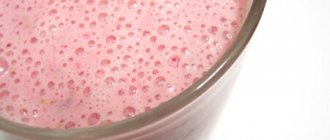© korchemkin — stock.adobe.com
Share:
What type of sports nutrition protein is most often used in bodybuilding, crossfit, powerlifting and other types of athletics? The correct answer is whey protein, which is considered one of the best types of protein on the planet. Why is it so effective in strength sports, is its value overestimated, and which whey protein is best for CrossFit? You will find detailed answers to these questions in our article.
General profile
How is whey protein different from any other protein? First of all, whey protein is of animal origin, which means it is not suitable for vegetarians. Whey protein is a complex protein that contains the essential amino acids for muscle growth (leucine, isoleucine, valine). The compounds have a high absorption rate and tolerability for the athlete.
What is whey protein made from? From the cheapest raw material - whey. Professional companies purchase milk used in the separator for further drying, after which they purify the resulting raw materials and sell it as a professional mixture.
Why whey and not milk? Because of lactose. Since whey is a product of secondary processing of milk with the release of casein from it, a side effect will be a decrease in lactose levels (as in kefir). This reduces the burden on the digestive system and the risk of diabetes. In addition, this reduces the calorie content of the final product by 20-25%.
Let's look at the general profile of whey protein.
| Squirrel profile | |
| Absorption rate | Extremely high |
| Price policy | One of the cheapest types of protein |
| The main task | Closing protein windows after exercise |
| Efficiency | When used correctly, high |
| Purity of raw materials | Quite tall |
| Consumption | About 3 kg per month |
Which whey protein is best?
There is no “perfect protein.” When choosing whey protein, you need to consider factors such as budget, desired quality/taste, lactose tolerance, and what you intend to use the product for. Therefore, we have collected for you the advantages and disadvantages of each type of whey protein:
Advantages and disadvantages of concentrate
WPC is the most inexpensive protein supplement, but usually of decent quality. ideal if you are on a limited budget. However, WPC contains slightly higher fat and carbohydrate content.
Most WPC options contain a small amount of lactose, so if you do not tolerate milk sugar, then opt for a different type of whey protein.
Advantages and Disadvantages of Whey Protein Isolate
If you need lactose-free, low-fat and easily digestible protein, then isolate is the best option. The main disadvantages of isolate are that it is relatively expensive and does not have the sweet, creamy texture of WSC.
Advantages and Disadvantages of Whey Protein Hydrolyzate
Whey protein hydrolyzate is highly bioavailable, easily digestible, contains very little fat and carbohydrates and has a very high (> 90%) protein concentration. Unfortunately, hydrolyzate tends to be the most expensive whey protein powder of all. However, if your budget allows, then this “gold standard” of protein is definitely worth purchasing.
Advantages and Disadvantages of Whey Protein Blends
Many protein manufacturers, trying to find a balance between price, taste and quality, mix isolate and WPC. However, you should be wary of companies that, in pursuit of profit, add a tiny amount of isolate and/or hydrolyzate to the mixture and sell it as a higher quality product with a corresponding price (although in fact, it is just an overpriced CSB)
Varieties
Whey protein is the name of a product group. These types of whey protein are the most common on the market:
- Classic protein. The ratio of pure protein is about 70%. Cheapest source. It is not a commercial success due to weak advertising.
- Whey prot. The ratio of pure protein is about 85%. It is actively advertised by manufacturers as the coolest, most sophisticated and effective - because of this, it is more expensive than KSB and classic. Sold only in small packaging. Effective, but expensive.
- KSB prot. The ratio of pure protein is about 80%. Cheapest source. Commercially unsuccessful due to weak advertising.
- Isolate. The ratio of pure protein is about 90%. Unjustified consumption of protein. Needed only for bodybuilders-chemists who clearly calculate the fermentation and intake of a pure product, monitoring the calorie intake down to 1% of consumption.
- In complexes. The ratio of pure protein is about 50%. Used in gainers and complex proteins. Efficiency is low.
What is whey protein?
Whey protein is the number one most commonly used supplement worldwide. It is made from whey. It is obtained during the production of dairy products (as a by-product), mainly cheeses. Whey is the raw material for creating all types of whey protein, regardless of its form or manufacturer. Hundreds of studies prove that whey protein is the best protein supplement. This is due to the most saturated amino acid profile, low cost and the possibility of thorough purification of raw materials during production. In terms of the totality of its benefits, whey protein is superior to any other type of protein (in descending order):
- egg
- lactic
- casein
- soy
Whey protein is often compared to milk protein, highlighting the supplements as identical. This is a popular misconception. Milk protein contains not only whey, but also casein protein, which slows down the rate of absorption of the supplement compared to pure whey.
Whey protein is classified as a dietary supplement. Its main task is to provide the body with quickly digestible and highly purified protein, which contains almost no fat, carbohydrates and various impurities. The protein will then be broken down into amino acids, just like any other protein, regardless of its source.
What is it needed for
To understand why athletes of different strength types need whey protein, you will have to delve into biochemistry. The rate of absorption of this protein varies from 3 to 10 minutes. Hence, it is taken before, during and after exercise. What does this give?
- Before training – reducing the catabolic effect of pumping training.
- During training – a temporary improvement in strength indicators by 2-3%, which allows you to lift a few more weights.
- After training – closing the protein window.
As a result, this stimulates the development of the athlete, moving his athletic performance forward.
Proper intake of whey protein will help:
- During drying - in the early stages (before sodium is drained) it will reduce catabolism in the muscles immediately after training, without affecting the overall balance of calorie intake. At this time, the synthesis of new amino acids is a priority for the muscles - which means that the body will not burn protein into carbohydrates.
- For mass gain, increase protein levels without affecting calorie content. This allows you to get a higher ratio of pure muscle mass to total weight.
- When losing weight, it will increase your overall well-being by adding protein. Will reduce the load on the gastrointestinal tract. Will be a replacement for frequent snacks to speed up metabolism
- While maintaining shape. Makes it easier to control your protein intake. It will increase strength indicators, which will create an excellent anabolic background.
Benefits of Whey Protein
Here are 10 research-backed facts about the benefits of whey protein.
Whey is an excellent source of high quality protein
Whey protein is made from whey protein, which is the liquid separated from milk when cheese is made.
It is a complete, high quality protein containing all the essential amino acids.
In addition, compared to other types of protein, it is very quickly digested and absorbed from the intestines.
These qualities make it one of the best dietary sources of protein.
Typically whey protein looks like this:
There are three main types of whey powder: concentrate, isolate, and hydrolysate.
Concentrate is the most common type and also the cheapest.
As a dietary supplement, whey protein is widely popular among bodybuilders, athletes and those looking to get extra protein in their diet.
Bottom Line: Whey protein has very high nutritional value and is one of the best dietary sources of high-quality protein. It is easily digestible and absorbed quickly compared to other types of protein.
Whey Protein Promotes Muscle Growth
Muscle mass naturally declines with age.
This typically leads to increased body fat and increases the risk of many chronic diseases.
However, this negative change in body composition can be partially slowed, prevented or reversed in combination with exercise and proper nutrition.
Strength training combined with consuming plenty of protein in foods or supplements are effective preventive measures.
Particularly effective are high-quality protein sources such as whey, which is rich in the branched-chain amino acid leucine.
Leucine is the most growth-stimulating (anabolic) amino acid.
Therefore, whey protein is effective in preventing age-related muscle loss, as well as improving body strength and appearance.
For muscle growth, whey protein has been shown to work slightly better compared to other types of protein such as casein or soy.
However, if your diet excludes protein, supplements probably won't do much harm to your figure.
Bottom line: Whey protein is great for muscle growth and is effective when combined with strength training.
Whey protein lowers blood pressure
Abnormally high blood pressure (hypertension) is one of the most common diseases of the cardiovascular system.
Numerous studies have linked consumption of dairy products to lower blood pressure.
This effect has been attributed to a family of bioactive peptides in dairy products called angiotensin inhibitors (ACEs).
In whey proteins, ACE inhibitors are called lactokinins. Several animal studies have demonstrated their beneficial effects on blood pressure.
Human studies have been conducted to examine the effects of whey protein on blood pressure. However, many experts consider this evidence inconclusive.
One study in overweight people found that supplementing with 54 grams of whey protein per day for 12 weeks reduced systolic blood pressure by 4%. Another milk protein (casein) exhibits similar effects.
This is confirmed by other research. Scientists found significant changes when participants were given whey protein concentrate (22 grams per day) for 6 weeks.
However, blood pressure decreased only in those who had high blood pressure.
No significant effects on blood pressure were found in a study using much lower amounts of whey protein (less than 3.25 g per day).
Bottom line: Whey proteins may lower blood pressure in people with high blood pressure. This is due to biologically active peptides called lactokinins.
Whey protein may help treat type 2 diabetes
Type 2 diabetes mellitus is a chronic disease characterized by high blood sugar and impaired insulin function.
Insulin is a hormone that is supposed to stimulate the absorption of sugar into blood cells, keeping it within healthy limits.
Whey protein has been found effective in maintaining healthy blood sugar levels by increasing insulin and sensitivity to its effects.
Compared to other protein sources such as egg whites or fish, whey protein takes the cake.
These properties of whey protein can even be compared to diabetic medications such as sulfonylureas.
As a result, whey protein can be effectively used as an adjunctive treatment for type 2 diabetes.
Taking whey protein with a carbohydrate meal reduces blood insulin levels in both healthy people and patients with type 2 diabetes.
Bottom Line: Whey protein is effective at controlling blood sugar levels, especially when taken with a carbohydrate meal. This may be especially helpful for people with type 2 diabetes.
Whey Protein Reduces Inflammation
Inflammation is part of the body's response to injury. Short-term inflammation is beneficial, but under certain circumstances it can become chronic.
Chronic inflammation is harmful and can cause many diseases. It can increase health problems or negative effects from bad habits.
A large study found that large doses of whey protein supplements significantly reduced C-reactive protein (CRP), an inflammation-related condition in the body.
Bottom line: High doses of whey protein have been shown to reduce C-reactive protein in the blood—this may help reduce inflammation.
Whey Protein Relieves Intestinal Inflammation
Inflammatory bowel disease is a condition that is characterized by chronic inflammation in the lining of the gastrointestinal tract.
This is a collective term for Crohn's disease and ulcerative colitis.
Studies in rodents and humans have shown that whey protein supplements have beneficial effects on inflammatory bowel disease.
However, the available evidence is weakly supported and further research is needed before any scientific statement can be made.
Bottom line: Whey protein supplements may have beneficial effects on inflammatory bowel disease.
Whey Protein Boosts the Body's Antioxidant Defenses
Antioxidants are substances that act against oxidation in the body, reducing oxidative stress and the risk of developing various chronic diseases.
One of the most important antioxidants in the human body is glutathione.
Unlike most antioxidants obtained from food, glutathione is produced by the body.
In the body, glutathione production depends on several amino acids, such as cysteine, which is sometimes limited in supply.
Therefore, foods high in cysteine, such as whey protein, can strengthen the body's defenses.
A number of studies in humans and rodents have found that whey protein can reduce oxidation and increase glutathione levels.
Bottom Line: Whey protein supplements enhance the body's antioxidant defenses by promoting the formation of glutathione, one of the body's primary antioxidants.
Whey protein has beneficial effects on blood fats
High cholesterol levels, especially LDL cholesterol, are a risk factor for the development of cardiovascular disease.
In one study, overweight individuals received 54 grams of whey protein per day for 12 weeks, which resulted in a significant reduction in LDL (“bad”) cholesterol.
Other studies have not confirmed a similar effect, but it may be missing due to differences in study duration.
Further study is needed before any conclusions can be drawn.
Bottom Line: Long-term consumption of high doses of whey protein may lower blood cholesterol levels.
Whey protein is highly filling, which may help reduce hunger.
Satiety is a term used to describe the feeling of fullness we experience after eating food.
The opposite terms are appetite and hunger, which cause the desire to eat.
Some foods are more filling than others, and their effects depend in part on their macro (protein, carbohydrate, fat) composition.
Protein contains three macroelements at once.
However, not all proteins have the same effect on satiety. It turns out that whey protein is more filling than other types of protein, such as casein and soy.
These properties make it especially beneficial for those who want to consume fewer calories and lose weight.
Bottom Line: Whey protein is very filling, even more so than other types of protein. This makes it a useful addition to a low-calorie diet.
Whey protein helps you lose weight
Increasing your protein intake is the best strategy for weight loss.
Eating plenty of protein can promote fat loss:
- Appetite is suppressed, which leads to reduced calorie intake.
- Metabolism improves, which helps you burn more calories.
- Muscle mass is maintained, although weight is lost.
Whey protein has been shown to be particularly effective and superior in fat burning compared to other types of protein.
Bottom line: Eating plenty of protein is a very effective way to lose weight, and some studies show that whey protein works better than other types of protein.
Also read whether creatine has side effects.
How to use
How to properly take whey protein for strength athletes? In the specialized literature you can find a lot of articles about how it is taken for weight loss or weight gain. However, this is all a myth. Whey protein is not suitable for cutting or regular weight loss due to its amino acid profile and absorption rate. They cannot close the nighttime protein window, but they are quite suitable for daytime anti-catabolism.
Let's look at a typical whey protein intake regimen. For this we need:
- calculate net weight;
- count the number of workouts per week;
- Calculate your protein intake from natural foods.
Note. There is a myth that whey protein should not be taken in portions of more than 30 g of substrate at a time. In reality this is not the case - it all depends on individual tolerance. For some, this dose may be 100 g, while for others, 30 g will have to be divided into several doses.
Whey protein, like any other protein, is designed to overcome its deficiency in the body. Let's consider a classic situation. Athlete 75 kg, fat – 20%. He is actively gaining weight. Requires 2 g of protein per kilogram of body. The total protein intake from natural food is about 50 g of the complete amino acid complex. The general disadvantage is 70 g.
How to drink whey protein correctly in this case?
- On a training day. The first dose instead of lunch is 30 g of the mixture mixed with milk or yogurt. The second dose is taken within 15 minutes after the end of training to close the protein window - up to 60 g at a time. The third dose is optional, an hour after the last meal, but not earlier than 2 hours before bedtime.
- On a non-training day. Dose No. 1 instead of lunch – 30 g of the mixture mixed with milk or yogurt. The second dose is taken an hour after the last meal, but not earlier than 2 hours before bedtime.
That's all the secrets. No extreme regimens are needed to achieve optimal results. In addition, excessive indulgence in protein can negatively affect the digestive system. In particular, the athlete will simply stop absorbing natural protein.
Benefits of Whey Protein
Whey protein is a protein obtained as a by-product of cheese making. Provides tremendous assistance to those who want to increase their volume, or, conversely, to those who want to lose weight.
As the name suggests, whey protein is made from whey , which is the liquid that remains after cheese is made. The production of whey protein can be divided into two stages. In the first stage, fats and carbohydrates are separated from protein. In the second stage, the protein is separated from the water to obtain dry matter. Sometimes flavorings are added to the protein.
This effect is due to the fact that the product has all the necessary globular proteins. Obtained by processing whey, whey protein contains milk sugar, various beneficial microelements, and the protein of the whey itself. After several stages of processing, namely removing fat, drying product residues, and passing the dried substance through several filters, we obtain this product. The very last step is to add various flavors to give the product different flavors. 3 types of ready-made protein , each of which differs in the degree of its purification.
Effects of taking whey protein
The effect of regular consumption of whey protein is faster muscle growth. The protein owes this property to the presence of three amino acids - leucine, valine and isoleucine (about 26% of the composition).
Thanks to them, muscles are not only built faster, but also regeneration processes occur faster.
Another positive effect of taking supplements is suppression of the catabolism process. You should know that during intense workouts, as well as after they finish, your body tends to draw energy from the muscles, which leads to burning them. Thus, using whey protein makes your exercise very effective. It should be noted that whey protein is often a better choice than food-based protein because it is absorbed faster and better.
The big benefit of whey protein is that it lowers bad cholesterol levels and further lowers blood pressure. Thus, its regular consumption can reduce the likelihood of cardiovascular diseases.
Additionally, people with diabetes should take whey protein as it has the ability to stabilize blood sugar levels. It is especially recommended to take it before meals, the glycemic index of which will be very high
Interestingly, whey protein may be beneficial for people with asthma. It is now believed that protein may improve the body's immune response. The consumption of whey protein is prescribed even for such a serious illness as HIV infection. In these cases, it helps stop rapid weight loss.
Types of Whey Protein
Concentrate – contains fats and cholesterol in small quantities. It has a milkier taste than other types. Not suitable for every consumer due to high lactose content.
Protein isolate is used by athletes during the so-called drying period. Contains a large amount of active substances (90%). Has low lactose levels. Can also be taken with amino acids.
The hydrolyzate has a bitter taste, which indicates the maximum degree of purification, unlike its counterparts. Due to its high absorption, it can sometimes cause a spike in insulin. Does not cause any allergic reactions. It is not recommended to use if your goal is weight loss.
It is worth listing all the beneficial properties that protein has: a direct effect on muscle gain, success with diets, and a recovery effect.
Whey protein can be mixed with almost anything. However, it should be taken into account that each type has a different absorption rate, and due to the lactose content, some individuals may want to avoid this supplement. However, these restrictions do not apply to the hydrolyzate.
It is useful for those who want to increase their strength and improve athletic performance. However, the scientific evidence on the effectiveness of whey protein in building muscle mass is mixed. This type of protein is also used as a dietary supplement to help prevent unhealthy weight loss in people with HIV, and can sometimes be used to prevent allergies in very young children. Scientific evidence on the effectiveness of whey protein is varied.
Efficiency
How whey protein works when consumed correctly, and what you can achieve with it:
- Improvement of strength indicators. The main task of protein is precisely to strengthen muscle fibers in order to increase their initial strength capabilities.
- Increase in dry mass. If you follow your diet correctly and do not allow excessive increases in calorie intake, whey protein will improve the synthesis of internal protein, which will allow you to build up truly lean mass.
- Change in energy level. Whey protein, due to its absorption rate, will force the body to intensively synthesize ATP, which will also affect endurance performance.
- Feeling better.
- A little flooding with water. Although lactose-free, whey protein has a huge amount of sodium, which will cause slight flooding and make it unusable during the quality final drying stages.
Whey Protein Is Harmful
Research is constantly being carried out in this direction. Thus, the harm from this product has been proven if it is consumed excessively and irrationally, since increased protein content increases the risk of cardiovascular pathologies and neoplasms. A diet with an increase in protein content negatively affects the functioning of the kidneys, and long-term use can lead to persistent kidney diseases.
There is also individual intolerance to whey protein in the form of allergic reactions. In addition, it is necessary to take into account the state of the body's enzyme system, since it will take much more than usual biologically active substances - excymes - to break down protein foods. Otherwise, you may have problems with the stomach and intestines in the form of pain and flatulence (bloating). Headache and resulting cramps can also create problems. Much, of course, depends on the manufacturer and quality of the food additive, on the content of preservatives and additional substances that improve taste. However, this information remains inaccessible to many sports nutrition consumers, which increases the risk of the above-mentioned harmful effects.
Despite the above harm, this nutritional supplement is successfully used by many athletes. Whey protein is a purer product with a high content of quality protein compared to soy protein. Proteins of animal origin are complete proteins; they are absorbed better and faster, exerting their positive effects. Whey protein is a natural component, not a synthetic product, and this is its significant benefit. The human body absorbs natural products better.
Best Whey Proteins
It's time to figure out which whey protein to choose and which manufacturer to listen to:
- KSB 80%. Belarus is pure raw material. It is important to buy it not from advertised suppliers, but to look for truly Belarusian distributors. In this case, purchasing will only be possible in bulk from 50 kg. However, on the plus side, you'll get a whole year's supply of protein at a third the price of any other branded protein. The quality of the KSB is of course not the highest - and its consumption will exceed the standard by about 20%. However, this protein has a complete amino acid composition, and is perfect as a raw material for the first 12-18 months of training.
- For those who are interested in higher quality products, we can recommend whey isolate from Optimum nutrition. The quality of raw materials is excellent. Has many flavors. Sometimes supplemented with valine. The disadvantages are the high price and inconvenient packaging. 2.5 kg is very little for a month, so you have to take 2 cans, which is not economically viable.
- BSN is probably the best option. The highest degree of purification of raw materials. Complete absence of flooding effect. The only disadvantage is the price - about 30 USD per kg of product.
Types of Whey Protein
There are several types of whey protein. They differ in the content of protein, lactose and biologically active substances.
| Types of Whey Protein | |
| Whey Protein Concentrate | 70-80% protein, some lactose and fat, the most pleasant taste, the highest content of biologically active substances |
| Whey Protein Isolate | 90% protein (or more), less lactose and fat, as well as beneficial biologically active substances than in concentrate |
| Whey Protein Hydrolyzate | A form of whey protein in which the protein molecules are partially broken down into peptides (chains of amino acids) to further accelerate absorption |
Whey protein concentrate is probably the best and most popular of the three types based on price/quality ratio:
- it is the cheapest of all three;
- it retains the most biologically active natural substances;
- its taste is better.
The more pleasant taste of whey protein concentrate is explained by the presence of some milk sugar (lactose), which gives the milk a sweet taste, and fat.
Whey protein isolate is a purer form of whey protein: it has more protein and less lactose.
Isolate is an alternative for those who are lactose sensitive or who need a source of clean protein that is low in carbohydrates and fat.
Types of whey protein include: concentrate, isolate and hydrolysate. They differ in the relative content of protein, lactose and fat, and the form of protein. The most popular and optimal in price and taste is whey protein concentrate.
We recommend : Casein harm. Sports casein is the worst protein
How much will it cost
Now about the price of the issue. Despite the fact that whey protein is one of the cheapest, it is still somewhat more expensive than natural food. How much can a protein course for mass gain cost, and how much whey protein should I buy?
If you plan to stay in strength sports, then it is better to purchase whey protein for 3 months at once - bags with packaging up to 10 kg are suitable for this.
With the consumption that we indicated as recommended, the average consumption is 3 kg of protein per month + - statistical error. Only by starting to eat so intensively can you count on stable growth. This means that, first of all, you should not buy small packages or bags sold in sports bars and fitness centers.
If you find a normal purified protein without flavors (the same as KSB was before advertising), then a 3-month course will cost you about 60-70 dollars. If you don’t trust little-known manufacturers and want to take a complex enriched isolate from Optimum nutrition, then 3 cans of such prot (2.7 kg each) will cost you 200 USD. The best American manufacturers will cost you 30 USD. per kg. The same BSN prot combined with creatine.
Expert tip: Never buy cheap whey protein gainers. The dextrin included in their composition costs a penny, but the cost of the final gainer will exceed all dreams. If you are interested in gainers, it is better to take a couple of kg of low-quality whey protein and mix it with glucose (1.2 USD per kg), or malta (1.5 USD per kg). As a last resort, you can stir it with sugar, which will cost less than a dollar per kg.
Which is better to choose?
Each type of protein has its own characteristics. You need to make a choice taking into account your preferences, budget, and reception goals:
- For muscle growth. Numerous studies confirm that whey protein is better than other types of protein in stimulating muscle mass and improving recovery processes. Whey concentrate is cheaper than isolate, but contains a lower concentration of protein. It is most beneficial to take this form before or after physical activity.
- For weight loss. Those who want to lose weight should also take protein mixtures. They help prolong the feeling of fullness and help maintain muscle mass while losing fat. Whey and casein proteins, as well as their combination, are most beneficial for weight loss. A popular option among those losing weight is to replace one of the meals or a snack with a protein mixture.
- For vegetarians. Plant-based varieties are suitable for vegetarians or vegans. The most common of them is soy.
- For lactose intolerance. For those who cannot consume dairy products, egg or beef protein, as well as plant-based types, are suitable.
Each type has its own advantages and characteristics. To make the right choice, you must first consider your goals. If possible, it is worth consulting with a coach. Whey protein is suitable as a quick source before and after exercise, as well as in the morning to suppress catabolism. Casein, as well as multicomponent mixtures based on it, can be consumed at night. Plant-based varieties are suitable for vegetarians and athletes who want to diversify their diet.
How to take whey protein
To work on relief, whey protein isolate is suitable, which is best taken after training or in the first half of the day. Do not exceed two servings per day, stir the powder in water.
Whey protein concentrate and hydrolyzate are suitable for gaining weight Both options can be consumed in the morning after waking up to prevent catabolism, before or after training. Compare the composition of the powder with food products, taking into account the daily calorie intake and the BJU ratio. Stir the powder into milk or juice.
What is whey protein made from?
You may remember how your mother made cottage cheese from milk as a child? Yes, I hung the sour stuff in a gauze, and a light greenish transparent liquid dripped from it into the bowl. This is whey, tasty and healthy. It contains a lot of protein, and most importantly, it is one that is quickly and easily digested. And also lactose and minerals. Our protein is made from this whey, which is formed during cheese production.
It has been noted that it contains amino acids (BCCA) in large quantities, and that the immunoglobulin proteins in it are capable of thoroughly strengthening human immunity and putting up barriers to disease. We are also interested in whey protein because it is the best way to grow muscles and burn fat.
What are the benefits of whey protein?
Whey protein supplements have recently become popular among athletes to improve athletic performance. Whey protein is a popular dietary supplement; whey protein is good for gaining muscle mass and strength; it contains essential and biologically valuable amino acids and branched-chain amino acids.
In addition, using whey protein for weight loss, this type of protein reduces oxidative stress by increasing the production of endogenous glutathione, as well as problems with the digestive system that periodically occur during intense physical activity.
I also want to remind everyone that natural sources of whey protein may be superior to whey protein supplements in terms of holistic nutritional value.
Increases strength and lean body mass
Most sporting events depend on the strength performance of the muscles; the more strength in the muscles, the higher the performance and performance of the athlete. Since strength is the product of mass and acceleration (F = M * A), increasing muscle mass is the most common way in which athletes seek to increase strength performance.
Skeletal muscle hypertrophy requires proper training, resistance exercise, and a nutritional state in which muscle protein synthesis exceeds muscle protein breakdown.
One of the main concepts in the skeletal muscle hypertrophy literature is that of net protein balance. Net protein balance is determined by the difference between muscle protein synthesis and its breakdown. Thus, if synthesis is greater than breakdown, skeletal muscle hypertrophy occurs.
One of the most important factors influencing protein synthesis and breakdown is the presence of amino acids. Whey protein supplements are a source of amino acids of high biological value and are used to increase muscle mass and strength.
There has been a huge amount of research done into the effectiveness of whey supplements. Their results are not entirely clear; however, most of the evidence collected suggests that whey protein does help build muscle mass.
In addition, researchers have recently shown that whey protein components regulate cell signaling pathways, namely the target of rapamycin, responsible for muscle protein synthesis and muscle hypertrophy.
Whey Protein and Glutathione
Oxidative stress is an imbalance between antioxidant defense systems and the production of reactive oxygen species. Oxygen demand during strenuous exercise can increase up to 100 times that at rest, which increases the production of free radicals, leading to oxidative stress.
Although research data is not clear, there is direct evidence that after intense training, the number of free radicals increases rapidly, and along with it, cell damage.
Athletes are at much higher risk of developing oxidative stress than the average person. The high levels of reactive oxygen species produced during strenuous exercise must be reduced by the body's endogenous antioxidant system in order to maintain oxidative balance.
Glutathione, the most common and important antioxidant, is a tripeptide synthesized from the amino acids L-cysteine, L-glutamic acid, and glycine. It is the most important redox couple and plays a critical role in antioxidant defense, nutrient metabolism, and regulation of pathways essential for overall body homeostasis.
In addition, glutathione acts as a regulatory compound in the activation of the circulating agents of the immune system, lymphocytes.
Glutathione is an important compound for maintaining overall health, and its deficiency can indicate various pathological conditions in the body, such as cancer, neurodegenerative diseases, cystic fibrosis, HIV and aging. Glutathione is very popular among athletes, as it is among them that its levels undergo significant fluctuations as a result of nutritional deficiencies, grueling training, and oxidative stress.
The athlete's body is subjected to high physiological stress. Glutathione plays an important role in maintaining normal redox processes during exercise.
This leads to the conclusion that it is necessary to maintain and even increase glutathione levels in athletes. Research has shown that the amino acid cysteine is a rate-limiting factor in glutathione synthesis. Thus, protein sources rich in cysteine should be included in the diet, which will effectively affect the rate of glutathione resynthesis.
However, supplements with free cysteine are not recommended, as it quickly oxidizes and becomes toxic. But natural sources of cysteine, present in food in the form of cystine (two cysteines linked by a disulfide bond), are more stable than free cysteine, and most importantly, they are well absorbed. Whey protein supplements, both isolates and concentrates, are protein sources that are rich in cysteine and transport it into cells through normal metabolic pathways.
Supplementing whey protein with the right amount of cysteine allows cells to replenish and synthesize glutathione without side effects. Research has shown that whey protein supplementation is beneficial for maintaining normal physiological glutathione levels in athletes as well as recreational athletes following intense training and exercise.
In addition, researchers have shown that whey protein improves an athlete's ability to cope with acute oxidative stress and is a safe and effective alternative source of antioxidants that help prevent sports injuries and illnesses caused by excessive reactive oxygen species (ROS).
Most researchers support the use of whey protein supplements in all sports to improve health in athletes by strengthening the endogenous antioxidant system.
Whey Protein and Immune System Function
Grueling workouts and heavy training regimens are associated with a decrease in cellular immune function. In addition, insufficient or unhealthy nutrition can exacerbate the negative effects of heavy workload on immune activity. Suppression of immune activity increases a person's risk of developing infection.
Athletes increase the volume and intensity of their training at certain stages of their training, which often results in overloading the body. Recent research data suggests that as the volume and intensity of training increases, the function of the immune system also improves.
Although the study did not show that athletes' immune system function decreases during these periods, it may be enough to increase the risk of contracting various infections.
Since the components of the immune system are largely dependent on amino acids, it is endogenous and biologically active amino acids that can affect the state of immunity.
Whey proteins, compared to other protein sources, are unique in their ability to provide lasting immunity due to the content of such beneficial compounds as glutamine, alpha-lactalbumin and beta-lactoglobulin, as well as whey proteins, lactoferrin, immunoglobulin.
Whey Protein and Digestive Health
Intense physical exercise reduces blood circulation in the abdominal cavity, leads to hypoperfusion in the intestine, and also increases the temperature in it. Reduced intestinal circulation and high temperature during intense exercise can lead to intestinal barrier dysfunction by increasing tight junction permeability.
Increased permeability of the intestinal walls leads to the entry of gram-negative intestinal bacteria and/or their toxic components (endotoxins) into the bloodstream. Endotoxins are highly toxic lipopolysaccharides found in the outer cell wall of gram-negative bacteria. Lipopolysaccharides are the main trigger for the host immune response, which consists of cytokine release.
This process, endotoxemia, can lead to increased susceptibility to infectious and autoimmune diseases as the intestinal walls lose the ability to block pathogens/toxins from entering the tissues and bloodstream.
The topic of intestinal permeability is relatively new, so researchers are still unable to clearly define the potential dangers of chronic or increased intestinal permeability.
However, recent research has established a link between intestinal permeability and a variety of autoimmune diseases, including Crohn's disease, Hashimoto's thyroiditis, lupus, psoriasis and rheumatoid arthritis. In addition, several mental illnesses, including schizophrenia and depression, have been linked to leaky gut.
As mentioned previously, tight junctions represent the main components of intestinal barrier function, and act as a physical and functional barrier against the passage of paracellular macromolecules from the lumen. Thus, the permeability of the intestinal walls should be regulated in order to maintain its functioning at the proper level and reduce the negative effects of endotoxins on the body.
The amino acid glutamine is critical in maintaining the tight junctions. Glutamine, the most abundant amino acid in the blood, is considered a “conditionally essential” amino acid. Glutamine is produced in the body to support its physiological functions.
However, in stressful situations, such as physical activity, endogenous glutamine production becomes insufficient, so the body needs exogenous sources of glutamine to meet its needs.
Glutamine improves intestinal permeability by restoring the integrity of tight junctions.
Whey protein is a rich source of glutamine, and studies have shown that supplementing with it can reduce intestinal permeability. Thus, whey protein is effective in reducing exercise-induced intestinal permeability and the risk of endotoxemia and autoimmune disorders.
conclusions
Whey protein is an excellent source of a huge amount of amino acids and nutrients that are beneficial for health. It increases lean body mass when combined with heavy compound exercise, increases glutathione, has immunomodulatory effects, and improves gut health.
A proper and well-balanced diet must include protein, the sources of which are either natural foods of animal and plant origin, or various types of protein supplements.
Rating: Best Whey Protein Brands
- Optimum Nutrition is a sales leader in the sports nutrition market. The brand has been a favorite of professional athletes and gym enthusiasts for many years. ON undoubtedly surpasses the competition in the quality of whey protein, which is endowed with both concentrates, hydrolysates and isolates. The cost of one can is approximately 1800 rubles.
- Ultimate Nutrition is an American brand of sports nutrition, along with ON, which is famous for its advanced technologies and quality standards for its products, including whey proteins. The brand's products have a high protein content per serving compared to competitors, and essential amino acids are also used to enrich the composition. The content of fats and carbohydrates is minimized. The cost of one can is from 1500 rubles.
- SAN - the brand is famous for its whey protein isolate supplements, which are often classified as hydrolysates. Proteins are maximally purified from fats and carbohydrates, and are also enriched with BCAAs, lactoferrin and alpha-lactalbumin, which help maintain nitrogen balance for better anabolism. The initial cost of such products is 2,500 rubles.
- Dymatize. The brand holds a leading position in sales of its “brainchild” - whey protein isolate ISO-100. The product is most preferable for athletes who are cutting, including famous bodybuilders and participants in the bikini fitness category. The cost of whey protein isolate is approximately 3,500 rubles.
- BioTech - the brand has become one of the leaders (along with ON) in the production of high-quality whey hydrolysate. The supplement contains practically no fats and carbohydrates (0.1 g and 0.13 g), and is absorbed as quickly as possible. And most importantly, it contains natural stevia - a natural sweetener. Perhaps one of the most expensive protein hydrolyzate supplements, per jar – 4,400 rubles.
Benefits of Whey Protein
- Whey protein is a rich source of protein and BCAAs (Branched Chain Amino Acids), essential for muscle growth and repair. The leucine it contains plays a special role in this process.
- This is a convenient way to get more protein into your diet without having to consume large amounts of solid food.
- Due to its purity, whey protein is quickly absorbed, making it ideal for post-workout consumption.
- Eating protein improves overall health and metabolism.
- Protein shakes come in a variety of flavors, allowing you to add variety to your diet if you're on a strict diet.
- Whey protein makes your favorite milkshake cheaper and tastier.
- Whey dissolves quickly in water and milk, so the shake is easy to prepare both after a workout and at any other time of the day.
- If you're pressed for time in the morning, a protein shake is a quick way to whip up a protein-rich breakfast.









